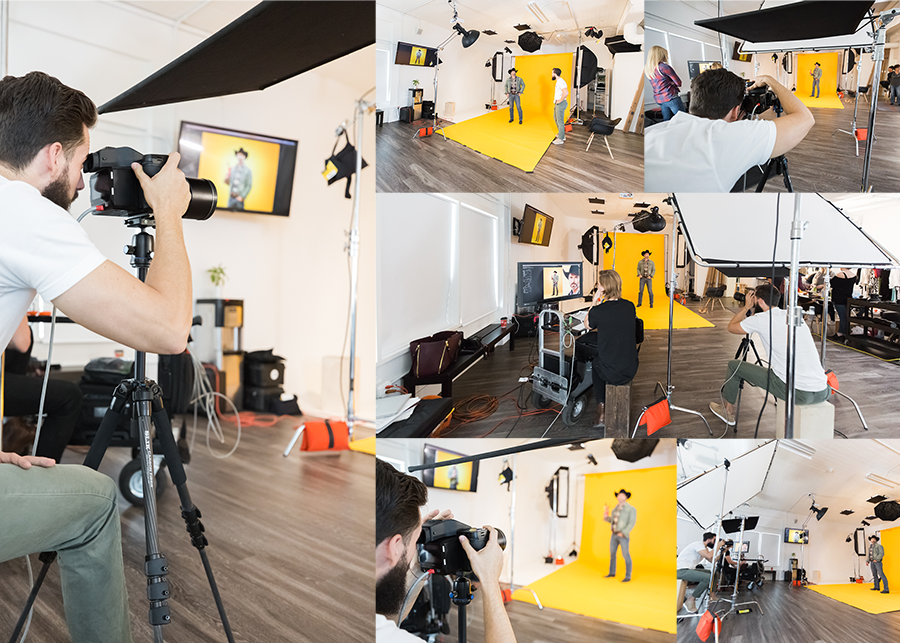Professional photographer Thomas Ingersoll is an accomplished studio photographer and teacher. He enjoys sharing his knowledge with other photographers and graciously agreed to share a peak behind the scenes of a recent photo campaign he shot. In this article he covers everything from the technical details like camera settings and set up, to the artistic which includes why he chose his settings and his process regarding composition, lighting and the creation of the final image. Q: Hi Thomas. Thanks for allowing this deep dive into the behind the scenes of your recent photo shoot. Who was the client, if you don't mind telling us? A: The Client was Gila River Casino, but I was hired by OH Partners, an ad agency.

Q: Can you explain the details about the shoot? A: This was shot for Gila River’s new campaign. There are different portraits representing the 6 different characters the ad agency created. The characters were from the commercial they filmed. Each character had a bit of irony, or misconception about them. The elderly woman who was a fashion diva, the cowboy who orders cocktails, etc..

Q: How was the concept developed for this campaign? A: The ad agency developed the concept. They put together the characters, and the shot list. It was my job to bring these characters to life through lighting and directing. Since the characters had a narrative about them from the film spot, I needed to bring them to life through imagery.

Q: How did you decide on lighting? A: After the ad agency briefed me on the concept, I thought about each character and what I could do to help tell their story. I wanted each portrait to pop. Since the images were just going to have the characters and the background I decided on a 6 light setup. This would make sure the character would stand out and get people’s attention. The 6 lights were:
- Key light - Beauty dish,
- Fill light - 6x6’ scrim,
- Rim light - (2) strip boxes,
- Hair light - 3’ octobox,
- Background light - 7” dish.
- Profoto equipment was used for the lighting equipment.

Q: What camera setup did you use for these shots? A: I shot this on a PhaseOne XF body with IQ 180 back, and a 150mm AF 3.5 Schneider lens. Shooting on the Phase system can be cumbersome so I relied on my Slik 724CFL with PBH-525-DS head. Shooting on the ball head and keeping the head slightly loose with the fine tune adjustment helped me move with the subjects. All the lights were profoto D1’ s and D2’s. Since the shoot was over the course of 2 separate days I prelit everything in the studio and marked light positions and power. On shoots like this it is imperative to tether. Tethering helps with things like accurately checking the images, and keeping the creative director in the loop during the shoot so we can make adjustments. This is also why having a digital tech makes a world of difference. I could not have done this shoot without my whole team and Blok Studio.

Q: For the actual shooting process, how much direction do you give the models? A: This shoot was all about direction. I needed to translate the Creative director's vision into reality. This meant talking with the subjects and helping them understand what I need from them. I greeted and talked to each model before they stepped in front of the camera. I want them to know I am a person and not just a camera. I found this helps keep a connection to the subject and I can usually get them to open up more on camera.
Q: What is your process for getting the models to give you what you want? A: I like to pose and mimic what I want from them. I will get goofy, awkward, energetic, etc.. I want to show them so there is nothing lost in translation. This helps them connect to me and show where I want them to start from. I will tell them to take it from there and let them run with it. I try not to control too much after I show them, but with a whole creative team behind me there is usually a lot of control over little things.
Q: How much post-production did you do for this shoot? A: Most of this was all done in camera. Thanks to my friends at Savage Paper I was able to get all the background colors I need so the backgrounds are all real. I just had my re-toucher, Jordan Hartley, do basic retouching and a few requests from the client.
Q: Can you describe what makes your shooting process successful? A: I think it's hard to describe my process, but if I had to say anything it’s that I have to be a people person. I have to build a good relationship with the creative director so I know what he wants. I then must have a good relationship with my crew so we can work seamlessly on the shoot. And I have to know how to connect with my subject. I have to articulate everything to hem in a clear way. My job is to keep everyone happy. I pride myself on making the shoot fun for everyone. Thank you to Matt, Maria, Stephen, Daniel, OH, Blok Studio, Slik Tripods, Savage, Profoto, Tether Tools, Think Tank, and Phase.
Thomas is an internationally published photographer, retoucher, writer and educator born and raised in Phoenix, Arizona. He shoots commercial and landscape photography. He enjoys teaching photography as much as he does shooting, he wants to give back to the community that has given him so much.







